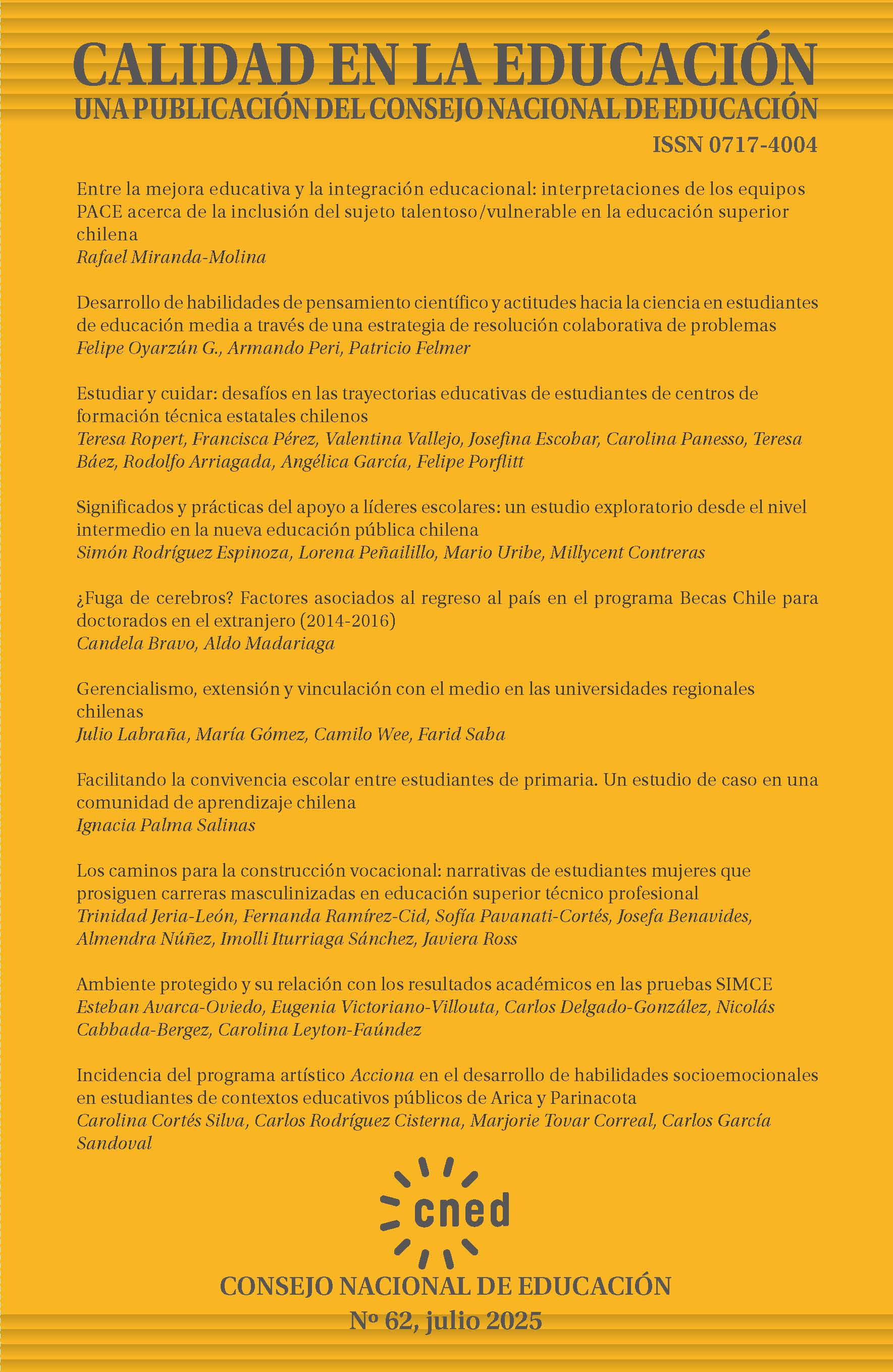Between Educational Improvement and Educational Integration: The Interpretations of Affirmative Action Teams Regarding the Inclusion of Gifted/Vulnerable Subjects in Chilean Higher Education
DOI:
https://doi.org/10.31619/caledu.n62.1533Keywords:
Affirmative Action, Deficit, Higher Education, Inclusion, Merit, Policy Enactment, Right to Education, Third Space ProfessionalsAbstract
Affirmative action constitutes a set of strategies increasingly deployed to address the tension between selectivity and equity associated with the massification of education. However, little research has examined the role of the professionals involved in these strategies. This study investigates the professionals of the Higher Education Access Program (PACE), new members of the so-called "third space professionals", who are usually associated with the field of "inclusion." Based on interviews with 38 professionals from two universities in the capital city, the analysis addresses how they interpret PACE, their responsibilities, and their positioning within it. A clear division emerges regarding professional and political commitments between the teams for Preparation in Secondary Education (PSE) and Student Support and Follow-up (SSF). PSE is oriented toward educational improvement in public secondary schools and understands education as a universal human right, while SSF is oriented toward educational integration and understands higher education as a meritocratic right, although both groups share a political commitment to inclusion and social justice. These findings allow us to problematize the association between affirmative action and social justice within a context where discourses of merit and student deficit constitute the dominant rationality of the selective university.
Downloads
Published
Issue
Section
License

This work is licensed under a Creative Commons Attribution 4.0 International License.
Authors retain their Copyright and only transfer a part of these to the journal, accepting the following conditions:
Authors keep their rights as authors and guarantee the right to the journal for the first publication of their work, which is simultaneously subject to the Creative Commons Attribution license allowing third parties to share the study accrediting the author and first publication in this journal.
Authors may adopt other non-exclusive license agreements for distribution of the version of the published work (e.g. inclusion in an institutional thematic file or publication in a monographic volume) accrediting initial publication in this journal.
Authors are allowed and recommended to share their work over the Internet (e.g. in institutional telematic files or their website) before and during the submission process, which may lead to interesting exchanges and increased citation of the published work. (See The effect of open access).

